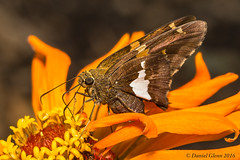![]()
![]()
![]()
Use LEFT and RIGHT arrow keys to navigate between flashcards;
Use UP and DOWN arrow keys to flip the card;
H to show hint;
A reads text to speech;
11 Cards in this Set
- Front
- Back

Badger
|
Taxonomic name: Meles meles Kingdom: Anamalia Phylum: Chordata Class: Mammalia Order: Carnivore Family: Mustilidae Genus: Melus Distinguishing features: Black and white striped head Notable behaviour: they are nocturnal and they live in setts (a complex network of tunnels) Diet: omnivorous - will eat a variety of different invertebrate animals, small vertebrae animals, nuts, fruit, bulbs Habitat: woods, pasture lands in low areas and sometimes in urban areas. |
|

Robin
|
Taxonomic name: Erithacus rubecula Kingdom: Anamalia Phylum: Chordata Class: Aves Order: Passeriformes Family: Muscicapidae Genus: Erithacus Distinguishing features: light brown with a bright red chest Notable behaviour: aggressively territorial Diet: omnivorous - worms, seeds, fruits and insects |
|

Adder
|
Taxonomic name: Vipera berus Notable behaviour: 'sit and wait' hunting behaviour, hibernates from October - march, sheds skin, will feed after mating. Habitat: Sandy semi deserts, open heathland, moors, lakesides, alpine rocky slopes |
|

Smooth snake
|
Taxonomic name: Coronella austriaca Class: Reptilia Family: Colubridae Diet: Adders, Lizards, small mammals, birds |
|

Reeve's Muntjac Deer
|
Taxonomic name: Muntiacus reevesi Phylum: Chordata Class: Mammalia Order: Cetartiodactyla Family: Cervidae |
|

Silver - Spotted Skipper
|
Taxonomic name: Hesperia comma Phylum: Arthropoda Class: Insecta Family: Hesperidae |
|

Blackbird |
Taxonomic name: Turdus merula Habitat: City centres, highland moors, woodland, gardens, copses, parks |
|

Red deer
|
Taxonomic name: Cervas elaphus
Kingdom: Anamalia Phylum: Chordata Class: Mammalia Order: Certartiodactyla Family: Cervidae Genus: Cervus Distinguishing features: Reddish brown coat which can become grey in the winter and cream coloured rump patch Notable behaviour: Rutting, grunting. tend to be more active at evening and night Diet: Herbivore - shrubs, tree browse, grasses, sedges, rushes and heather Habitat: Grassland, woodland, and upland moors |
|

Stag Beetle
|
Taxonomic name: Lucanus cervus
Kingdom: Anamalia Phylum: Arthropoda Class: Insecta Order: Celeoptera Family: Lucanidae Genus: Lucanus Distinguishing features: Giant antler like mandibles, black/brown and dark maroon colours Notable behaviour: Burrowing to lay eggs and to emerge later in the UK Diet: adults do not feed, they rely on the fat which was developed during their time of being a larvae however they do drink sap and fallen fruit. Habitat: Gardens, wooded parks, and pasture woodland |
|

Barn Owl
|
Taxonomic name: Tyto alba
Kingdom: Anamalia Phylum: Chordata Class: Aves Order: Strigiformes Family: Tytonidae Genus: Tyto Distinguishing features: Pale heart shaped facial disk, large black eyes, golden grey coloured upper parts and pure white under parts Notable behaviour: flies silently and slowly with feet dangling, has an eerie drawn out shriek Diet: Carnivore - feeds on small rodents especially voles and mice along with frogs and insects. Habitat: Farmland, heaths, marshes and sometimes large gardens |
|

Pipistrelle Bat
|
Taxonomic name: Pipistrellus pipistrellus
Kingdom: Anamalia Phylum: Chordata Class: Mammalia Order: Chiroptera Family: Vespertilionidae Genus: Pipistrellus Distinguishing features: Small 'dog like' face, broad flat head, short and broad ears. Notable behaviour: fast, 'ferky' like flight, emerge from roosting around 20 minutes after sunset Diet: Insectivore - insects Habitat: |

